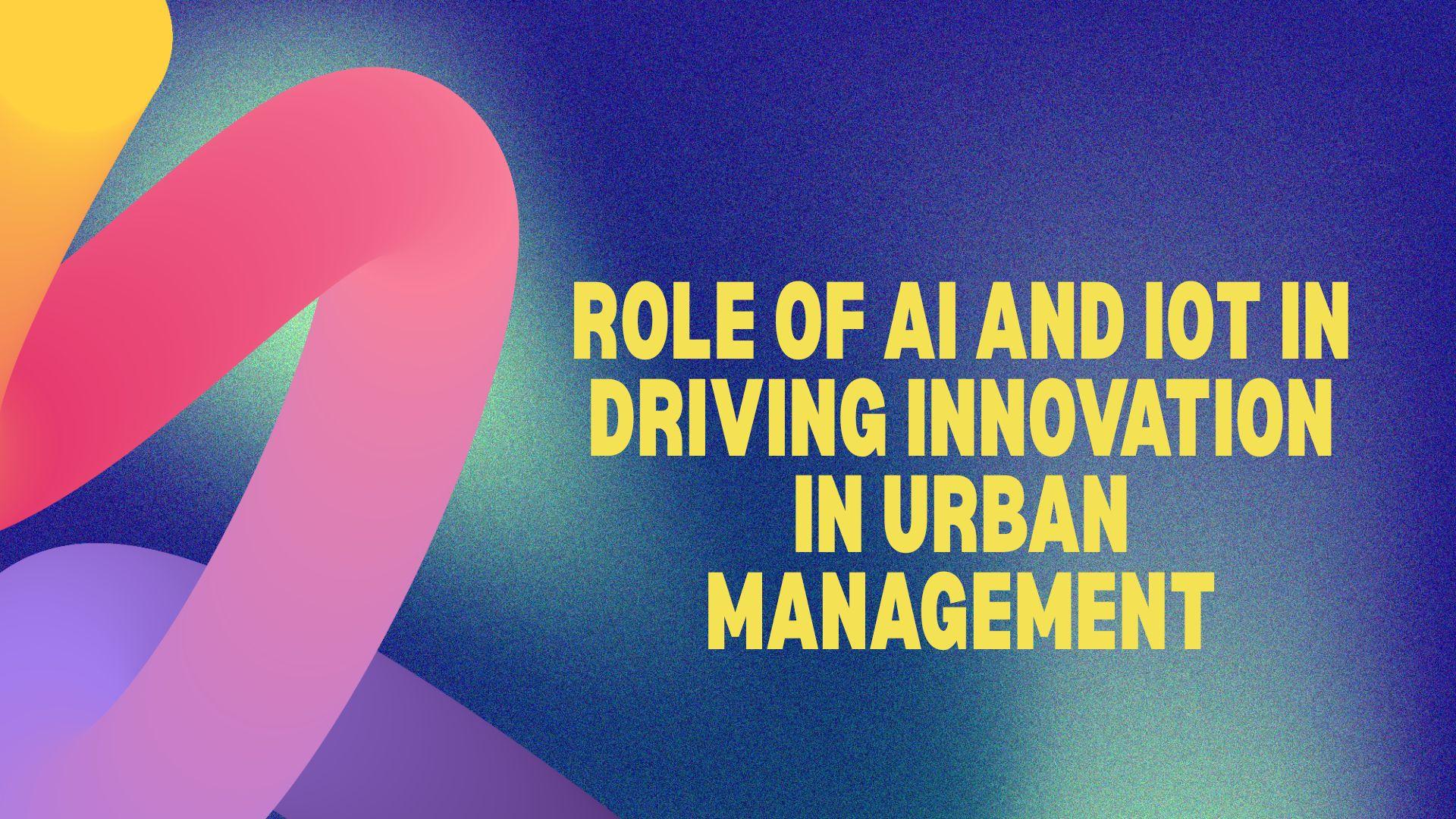Role of AI and IoT in Driving Innovation in Urban Management

Cities around the world are growing quickly. As more people move to urban areas, managing cities becomes harder. Challenges like traffic, pollution, energy use, safety, and public services are more complex than ever.
To solve these problems, cities need smart solutions. This is where Artificial Intelligence (AI) and the Internet of Things (IoT) play a big role.
In this blog, we’ll explore how AI and IoT work together to create smarter cities and help manage urban life more effectively.
What is Urban Management?
Urban management involves how a city is run, including services such as:
-
Traffic control
-
Waste collection
-
Water and electricity supply
-
Safety and surveillance
-
Environmental protection
-
Public transport
-
City planning and more
These tasks require constant monitoring, decision-making, and improvement. Without the right technology, it’s nearly impossible to do this efficiently.
Understanding AI and IoT
What is AI?
AI, or Artificial Intelligence, allows machines to think and make decisions like humans. It uses data, algorithms, and machine learning to find patterns and make smart predictions or suggestions.
What is IoT?
IoT refers to smart devices connected to the internet that collect and share data. These devices include:
-
Smart traffic lights
-
Sensors for air quality
-
Connected CCTV cameras
-
Smart water meters
When AI and IoT are used together, they offer powerful solutions for city management.
How AI and IoT Work Together in Urban Management
Let’s look at some of the most exciting ways AI and IoT are transforming urban environments.
1. Smart Traffic Management
Problem: Traffic jams and road accidents are common in cities.
Solution:
IoT sensors and cameras collect data on vehicle flow, speed, and congestion. AI then analyses this data to:
-
Adjust traffic lights in real-time
-
Alert drivers about traffic conditions
-
Suggest alternate routes
-
Prevent bottlenecks
Result: Smoother traffic, reduced fuel waste, and less stress for drivers.
2. Waste Management
Problem: Overflowing bins and irregular waste pickup.
Solution:
Smart bins use IoT sensors to detect how full they are. AI helps waste management companies:
-
Plan better collection routes
-
Reduce fuel and labour costs
-
Avoid missed pickups
Result: Cleaner cities and efficient services.
3. Energy Efficiency
Problem: Cities waste a lot of electricity.
Solution:
IoT-enabled streetlights and buildings monitor energy usage. AI adjusts light intensity or appliance operation based on:
-
Time of day
-
Presence of people
-
Weather conditions
Result: Lower power bills and reduced carbon footprint.
4. Water Management
Problem: Water wastage and supply issues.
Solution:
Smart water meters and leak detectors send data to AI systems. These systems:
-
Predict demand
-
Detect leaks early
-
Suggest repairs
Result: Save water and lower costs.
5. Environmental Monitoring
Problem: Poor air quality and rising pollution levels.
Solution:
IoT sensors track air, noise, and temperature. AI analyses data to:
-
Warn citizens of pollution levels
-
Support green city planning
-
Improve public health measures
Result: Healthier living conditions.
6. Public Safety and Security
Problem: Rising crime and delayed emergency response.
Solution:
Smart cameras and sensors detect unusual behaviour. AI can:
-
Alert police in real time
-
Recognise faces
-
Track suspicious movements
Result: Faster response and safer cities.
7. Better Public Transport
Problem: Unpredictable buses and crowded trains.
Solution:
IoT-enabled GPS devices track vehicles, and AI predicts delays. Apps can:
-
Show arrival times
-
Suggest routes
-
Balance demand
Result: Better commuting experience for passengers.
8. Smart Buildings and Infrastructure
Problem: Old buildings waste energy and are hard to manage.
Solution:
IoT in buildings tracks temperature, lights, and security. AI:
-
Learns user behaviour
-
Reduces energy usage
-
Improves comfort and safety
Result: Smarter infrastructure for the future.
Challenges of Using AI and IoT in Cities
While the benefits are many, cities may face:
-
High setup costs for smart devices and AI software
-
Data privacy concerns
-
Cybersecurity risks
-
Integration issues with old systems
However, with the right custom software solutions, these challenges can be managed effectively.
Conclusion
AI and IoT are changing the way cities are managed. From traffic to waste, from safety to energy, these technologies are helping city leaders build better, smarter, and more sustainable environments.
To truly benefit from AI and IoT, cities need flexible and tailored solutions. This is where a trusted technology partner makes all the difference. If your city or organisation is looking to innovate urban services, working with custom software developers South Africa can help you create intelligent, integrated systems that solve real problems.
FAQs
Q1: What is the role of AI in urban management?
AI helps cities make smarter decisions by analysing data and suggesting actions. It can predict traffic, control lighting, monitor pollution, and improve emergency response.
Q2: How does IoT help in smart cities?
IoT devices collect real-time data from different sources such as traffic lights, water meters, and sensors. This data helps manage urban operations more effectively.
Q3: Can small cities also use AI and IoT?
Yes, even small cities can benefit from basic AI and IoT setups. Solutions can be scaled based on need and budget.
Q4: What are the risks of using AI and IoT in urban areas?
Risks include data breaches, privacy concerns, and high implementation costs. But with proper planning and security, these can be reduced.
Q5: How can my city get started with smart urban management?
Start small with one system, like traffic or waste. Work with a trusted software development partner to create customised, scalable solutions.
- Art
- Causes
- Best Offers
- Crafts
- Dance
- Drinks
- Film
- Fitness
- Food
- Juegos
- Gardening
- Health
- Home
- Literature
- Music
- Networking
- Other
- Party
- Religion
- Shopping
- Sports
- Theater
- Wellness



